Dubai Airshow: Storm clouds over the 'Middle East three'
- Published

Dubai's last airshow was in 2015
They have been aviation's 21st century success story. For years, Emirates, Etihad Airways and Qatar Airways - the "Middle East three" or ME3 - looked unstoppable.
The airlines became a benchmark for service and quality, while their global reach earned them a nickname: the "super-connectors".
However, the headwinds are strengthening.
The Dubai Airshow, which starts on Sunday, promises to be a bigger and better showcase for all things aviation, space and defence than the last gathering in 2015.
But for the region's biggest three airlines, the economic, political and competitive backdrop is very different to two years ago.
Falling oil prices have hit revenues and trade in the region. Security worries about terrorism, particularly in the US, have led to cuts in airline routes.
There has also been a long-running diplomatic and trade impasse between Saudi Arabia and its allies on the one hand, and Qatar on the other.
And years of rapid growth has led to concerns about over-capacity, which comes just as competition from lower-cost carriers - both long and short-haul - has intensified.
'Under pressure'
The impact on profits for airlines in the region was underlined in a report by the International Air Transport Association (IATA), the industry trade group, external.
It expects Middle East carriers to post a collective $400m profit this year, down from $1.1bn in 2016.
For the first six months of 2017, trading conditions "sharply declined" and "some business models have come under pressure", IATA says.
"The region is struggling with increased infrastructure taxes/charges and air traffic congestion," it adds.
To make matters worse, the once-surging cargo operations have also taken a hit.
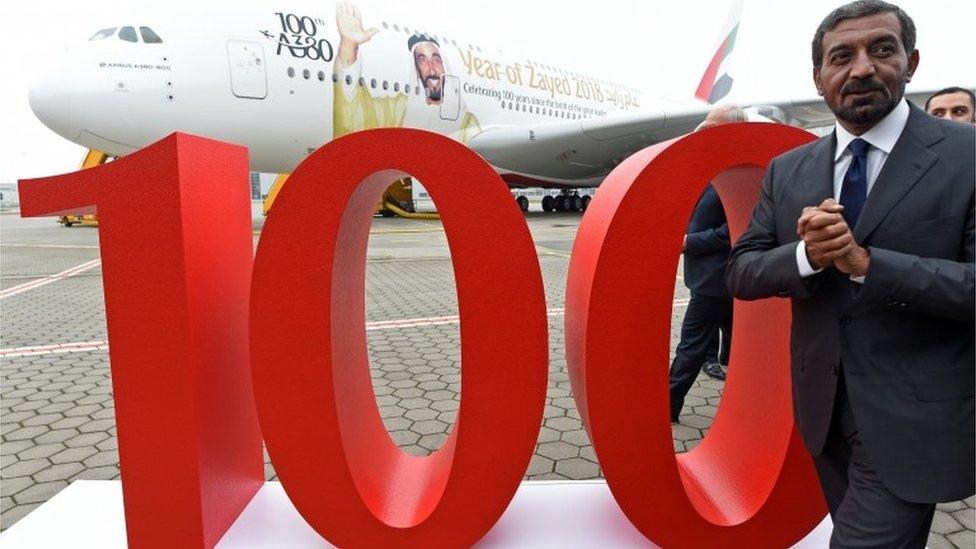
Emirates' chairman Ahmed bin Saeed Al Maktoum takes delivery of the airline's 100th Airbus A380.
Emirates' woes underline the problems.
In May, the region's biggest operator posted its first full-year profit decline for five years. Profits plunged 82% to Dh1.3bn ($340m) after what the airline's president Sir Tim Clark said was one of the carrier's "most challenging years to date".
Emirates reported far better news on Thursday when it said half-year net profits more than doubled to Dh1.7bn. It was a result of cuts in capacity and dollar exchange rate benefits.
But trading remains tough. IATA says that in September Middle East operators saw their slowest rate of monthly international growth for eight years, , externalwith demand up just 3.7%.
Its senior economist David Oxley says services from the Middle East to America are clearly suffering despite the lifting of the cabin ban on large portable devices.
The Middle East-US "is the only international market not to have grown in annual terms over the first eight months of the year," he says.
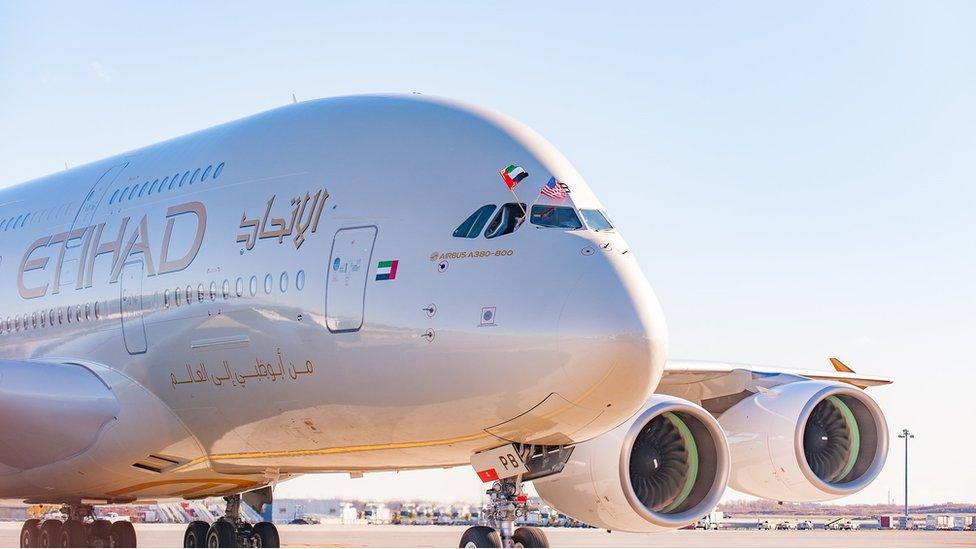
Etihad posted a $1.9bn loss last year
The situation at Abu Dhabi-based Etihad is even worse.
Says analyst Seth Kaplan, managing partner of US-based Aviation Weekly: "Emirates is struggling relative to its own history, but it is keeping its head above water. But Etihad is clearly in a lot of trouble."
Etihad posted a $1.9bn loss last year, which included an $800m write-down on the value of its investments in other airlines.
The airline has spent hundreds of millions of dollars buying stakes in other airlines, including Virgin Australia, Air Serbia and Jet Airways. One of the rationales was to help feed more traffic through Abu Dhabi's hub.
But the strategy is under review, a move that landed on Europe's doorstep this summer: Alitalia and Air Berlin filed for bankruptcy after Etihad decided not to invest further in the struggling airlines.
Cooperation
Lower-cost operators such as India's Indigo, Singapore-based Scoot, and the fast-growing Norwegian Air are chipping away at their bigger rivals.
Norwegian was recently offering Amsterdam-Dubai prices at more than half the price of Emirates.
The Gulf carriers helped bring back a certain luxury to air travel. But some of the fastest growth is now among airlines in the low-cost long haul market.
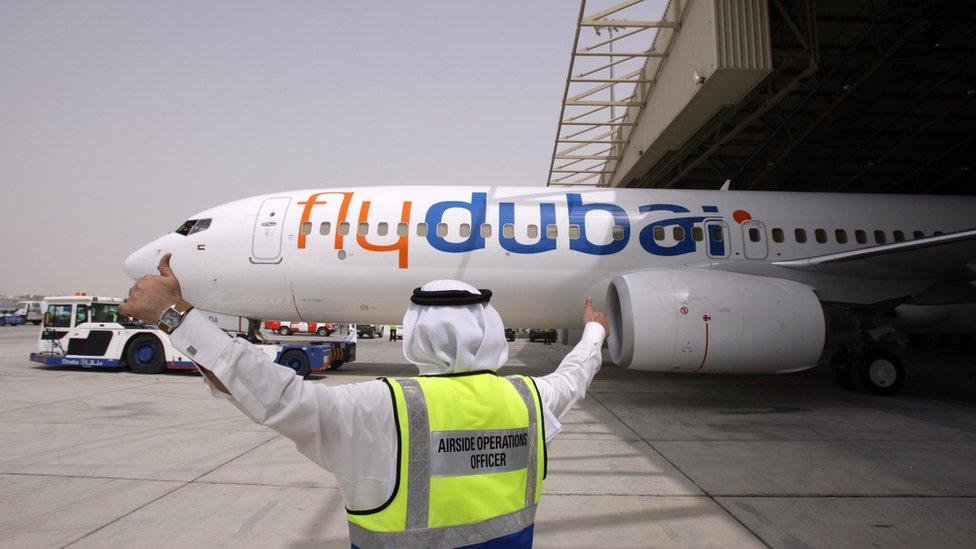
The Gulf has a fast-growing low cost airline market
This month, Emirates deepened its alliance with Flydubai that was first announced in July. There will be some co-ordination of schedules, marketing and reciprocal frequent flyer benefits.
But a bigger deal may be on the cards. Last month, Emirates' Mr Clark said he was open to cooperation with Etihad.
A merger, or alliance, would cut capacity and costs significantly, given their proximity. But it would be fraught with political hurdles, not just commercial ones, Mr Kaplan says.
Even a limited agreement on, say, joint purchasing or maintenance would be complicated, as both sides tried to negotiate common standards, work-share, and protection for their huge airport bases.
A lot depends on future oil prices and the revenues generated for governments, says Mr Kaplan. "The more prices rise, the less chance of a deal."
On "co-operation" with Emirates, Etihad said only that it would consider all opportunities that might make commercial sense.

Dubai Airshow
The trade-only show has been a regular feature since 1989, when 20 aircraft and 200 exhibitors took part
This week's event is expected to attract 72,000 trade visitors, 1,200 exhibitors, 160-plus aircraft and 1,350 media representatives
The 2013 event saw the biggest tally of commercial aircraft orders of any airshow - $206bn
Russia and China, keen to assert their influence in Middle East will have a big presence, with both displaying fighter jets
The space sector will feature prominently during the week, as the United Arab Emirates has a mission-to-Mars programme

Of the three major Gulf carries, Qatar Airways had been holding up relatively well. Net profits for the latest financial year rose 22% to 1.97bn (£400m) Qatari riyals.
The airline has also made more astute investments than Etihad, raising its stake in British Airways-owner IAG to 20% and buying 10% of South America's Latam Airlines.
But that was before the UAE, Saudi Arabia, Egypt and Bahrain imposed an embargo on the state of Qatar in June, accusing it of sponsoring terrorism, which it vehemently denies.
The blockade has piled on huge extra costs on the national airline, not least because of the need to re-route flights. In September, Doha was forced to inject $38bn into the economy to cushion the blockade's impact.
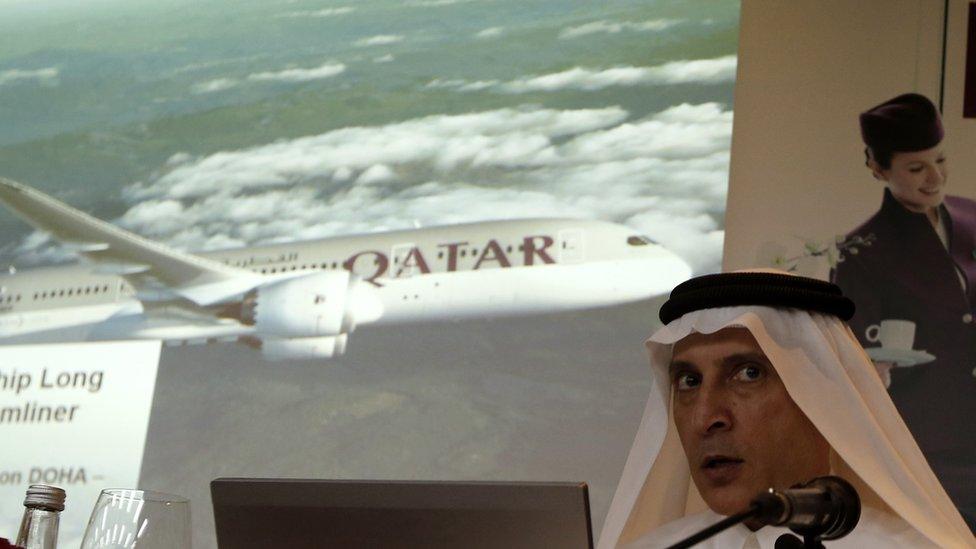
Qatar Airway's chief executive Akbar al-Baker
The ME3's problems mount just as some of their fiercest rivals, the US carriers, see signs of revival.
US airlines have long complained that the ME3's success has been bolstered by state subsidies that violate the Open Skies agreement that gave Gulf carriers access to America. They argue that the ME3 has collectively received $42bn in subsidies since 2004.
A trade row had seemed unlikely - until Donald Trump was elected president, that is. It now resonates more with his "America First" world view.
The ME3 deny receiving unfair aid. Besides, they point out, it was US Chapter 11 bankruptcy protection that helped big US carriers restructure after years of losses.
It's possible that life for the ME3 will get worse before it gets better. But in long run they will retain significant advantages.
With two-thirds of the world about an eight-hour flight from the Gulf, it will remain a fuel-efficient, time-efficient place from which to fly.
And the region's desire to build a tourist industry and diversify from oil-dependence will continue to underpin domestic carriers.
Add to that, a lack of disruptive unions and lobby groups complaining about noisy flights, and the Gulf remains a pretty advantageous place to base an airline.
- Published20 September 2017
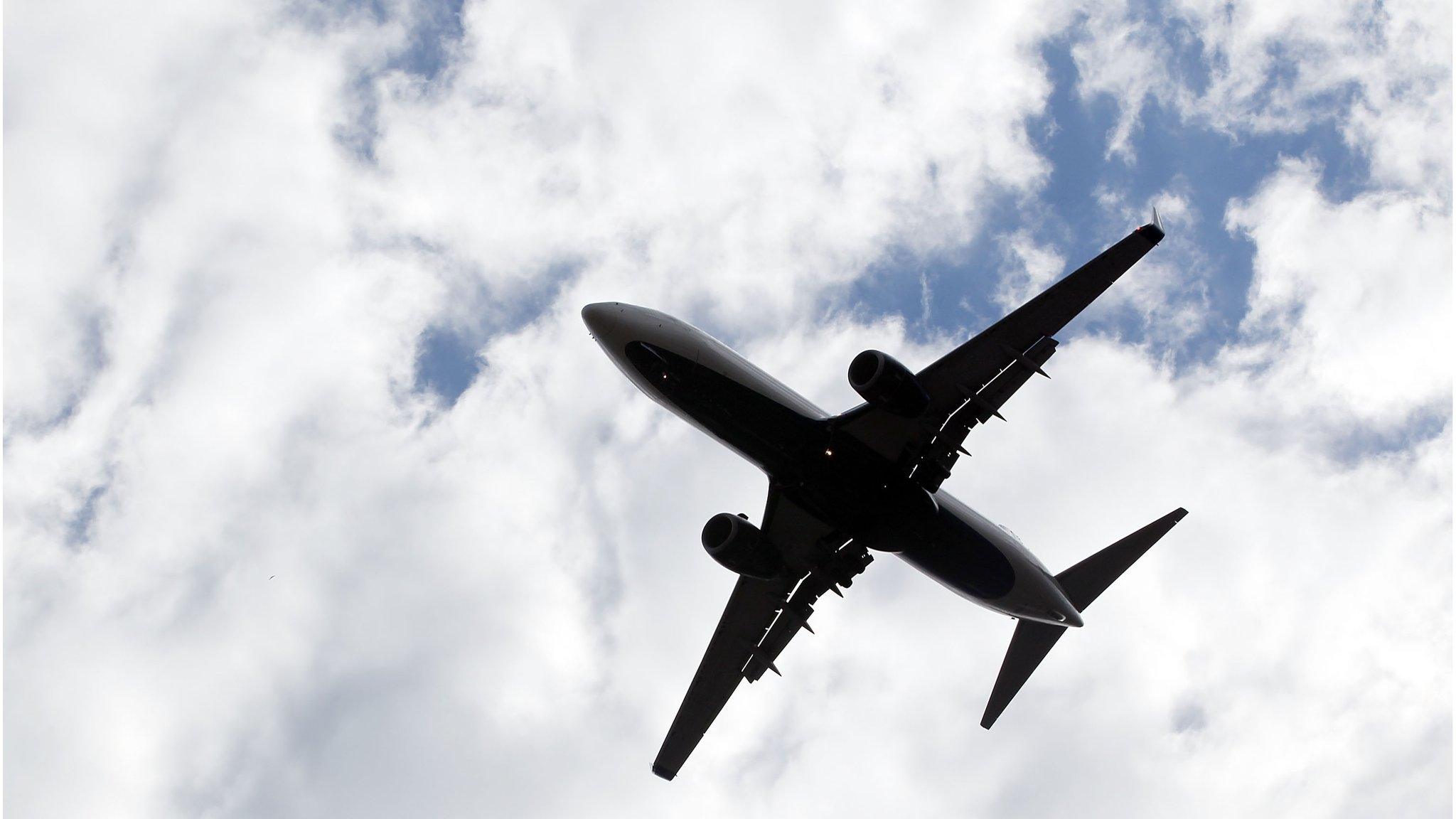
- Published14 September 2017

- Published31 July 2017

- Published20 July 2017
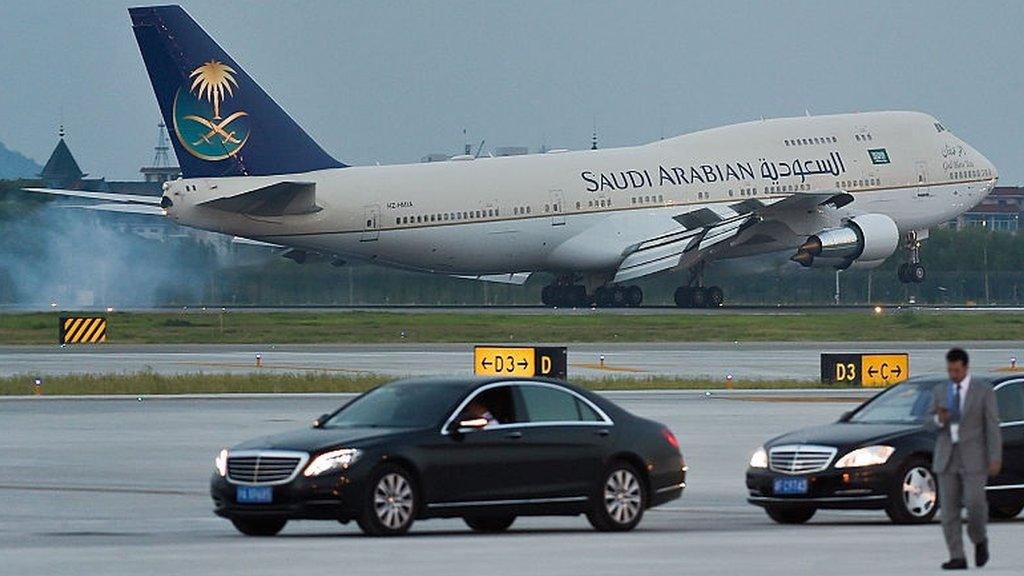
- Published25 September 2017
